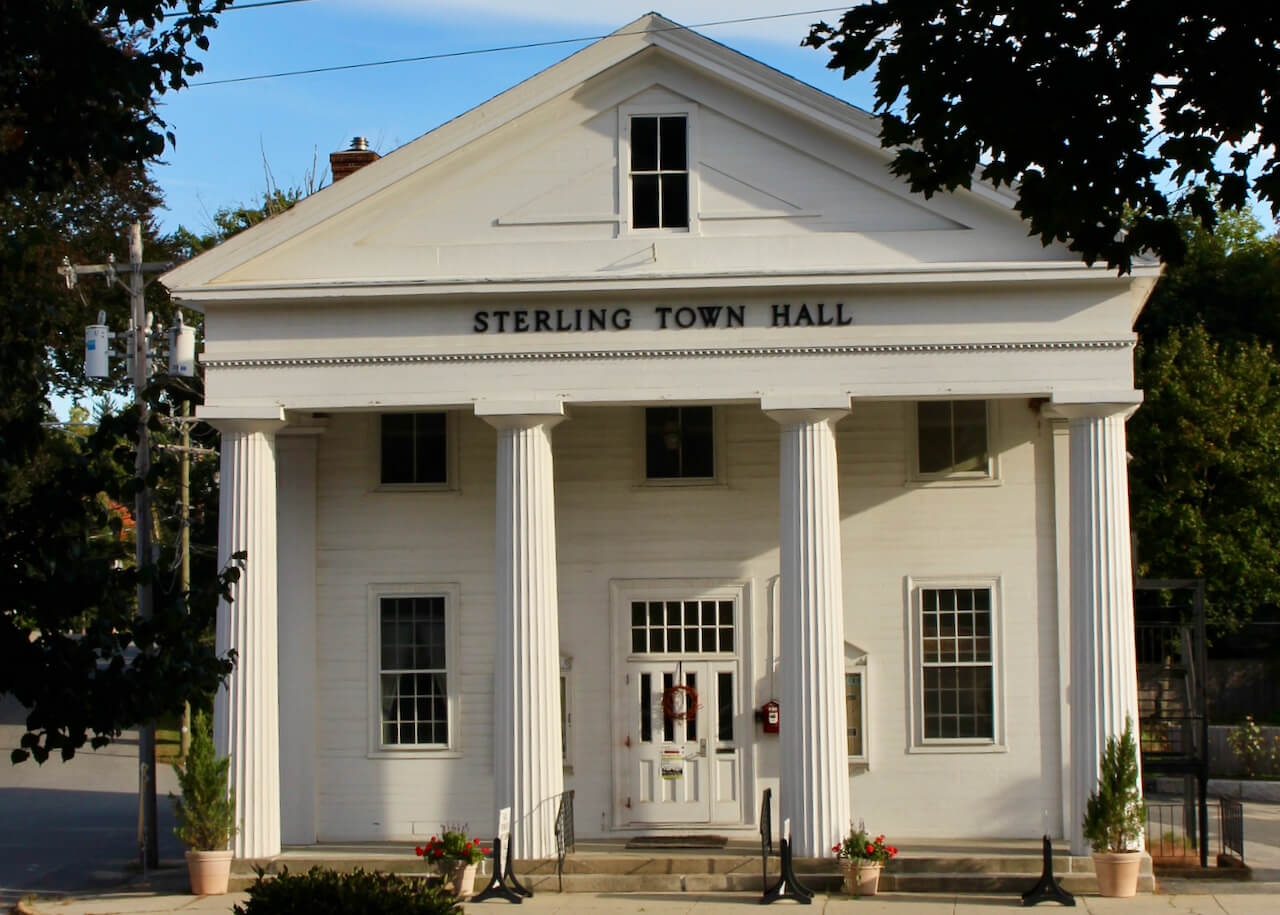Once occupied by the Nashaway, the territory known as Sterling was first settled by Europeans in the 1640s around the Waushacum Lakes. By 1764 more than 850 families lived in the town, which had become known as Chocksett, meaning “land of the foxes.” In 1781, Chocksett separated from Lancaster and incorporated as the town of Sterling.
While primarily an agricultural community, Sterling supported many cottage industries including the making of hats, needles, clocks, leather goods, shirts, chairs and pottery. Due to a lack of sufficient waterpower their growth was limited in scale until the 1850s when railroad access provided support for new markets of both agricultural products and manufactured goods.
Today Sterling retains much of its small-town atmosphere, while its agricultural lands are giving way to residential and industrial development. For about 100 years, the population remained at 2,000. Since 1950, it has grown to more than 8,000.




